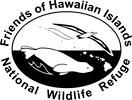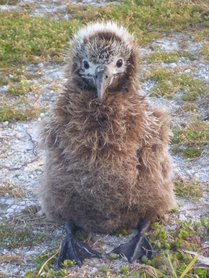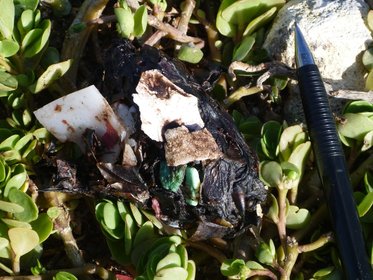What is a Seabird Bolus?Albatrosses feed their fast growing chicks by regurgitating into their mouth lots of squid, flying fish eggs and fish larva. Much like an owl pellet, a bolus is the indigestible material that is “thrown up” by the juvenile chick when it is about five months old. Shaped like a fat cigar, you can dissect a bolus to assess the health of our ocean, the foraging marine world for thousands of albatross trying to gather enough food to feed their hungry chick.
|
What Makes up a Bolus?
|
A bolus contains lots of squid beaks. A squid beak is a beak shaped jaw, made of chitin that does not digest. You may also find small bits of pumice, wood and a soft string like substance that once kept the flying fish egg masses intact. Unfortunately, there is also unnatural material in a bolus. Flying fish lay their egg masses on any floating structure in the open ocean whether man made or natural. These floating structures could be pieces of plastic unintentionally swallowed whole by albatross along with the fish eggs. The parent albatross then flies back to its nest to regurgitate what was consumed into the mouth of their albatross chick. U.S. Fish and Wildlife Service biologists and volunteers find bolus by the hundreds laced with plastics on Tern, Laysan and Sand Islands in the Hawaiian Islands and Midway Atoll National Wildlife Refuges. On a positive note, albatross have the natural ability to expel these indigestible materials. However, it is not uncommon to come upon an albatross chick carcass containing intact toothbrushes, plastic toys, bottle caps, cigarette lighters and fishing line.
|



